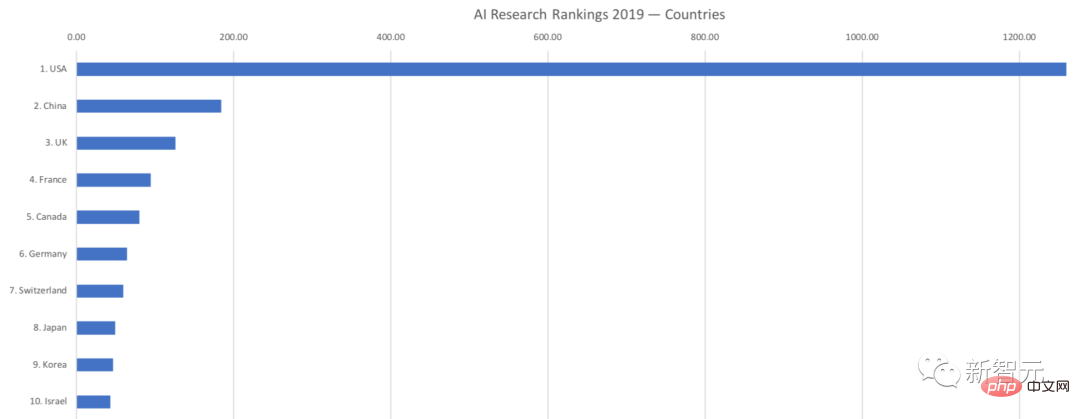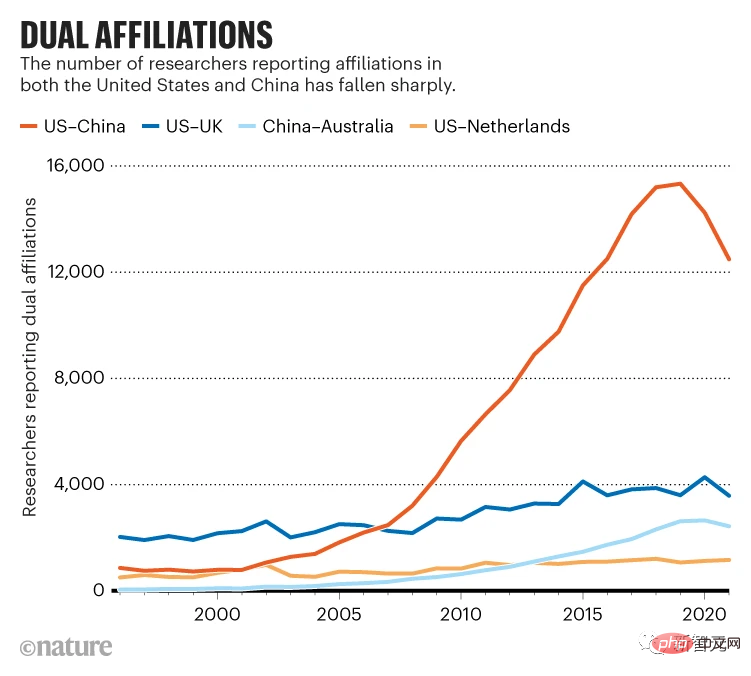
The core of China’s 21st century plan is to become a global leader in technological innovation. While substantial progress has been made toward this goal, China has long been considered a copycat on the world stage, choosing to adapt to Western inventions rather than truly innovate.
However, the tide is changing, and China has taken a leading position in some emerging technologies. For artificial intelligence, perhaps the most important emerging technology of the 21st century, this begs the question: Does the future lie in China? Or will this country continue to cling to America's coattails?
Since the 1990s, China has experienced a boom in living standards unprecedented in history. 700 million people have been lifted out of absolute poverty, and 75% of rural areas are close to being completely lifted out of poverty. A Chinese child born in the early 1990s will witness a 30-fold increase in per capita GDP.
One of the signs of China’s modernization is the rapid development and comprehensive implementation of digital technology. The speed of this change is also unparalleled.
In 2005, 70% of households in the United States had access to the Internet, while only 10% in China.
Today, China can be said to be the most deeply digital society in the world. Vendors grilling on street corners like to collect payments through mobile phones and QR codes, and more and more people use cash every day. few.
National infrastructure projects have built the world’s largest fiber optic network, with more 5G terminal connected devices than any other country and region on Earth.
Among the 10 companies that have achieved "unicorn status" the fastest, 8 are in China, and it is the country with the second largest number of unicorn companies in the world.
Despite the rise of technology and technology companies in modern China, there is still a key sticking point that must be unraveled before China can surpass the United States and become the world's leading technology power.
Can China’s innovation mechanism cultivate truly revolutionary products? Although the "Made in China" label is no longer a sign of low quality, the forces of China's technology market have tended to produce evolution rather than change.
Simply creating a product for the Chinese market that reflects an original Western concept can bring huge profits, with leading search engine Baidu earning more than $1 billion annually. Does this opportunity to use existing technology to create huge success cause companies to lose their true creativity and motivation to explore the unknown?
Although China has not yet formed the strength to challenge the United States’ technological hegemony in conceptual innovation, some things have begun quietly. Variety. As the domestic consumer market has become saturated, low-cost, high-quality technology has led Chinese companies to look abroad.
TikTok, launched by ByteDance in 2018, changed the media consumption of Generation Z and became the first Chinese software company to truly enter the global market.
#The secret of Tiktok’s success is artificial intelligence. The powerful AI recommendation engine matches content with users and firmly sticks to them. While these recommendation algorithms are not new in concept, they illustrate new ways for Chinese companies to compete with their American counterparts.
Although the United States has been leading the field of AI for decades, it has now been gradually caught up by China. This is determined by the nature of AI research.
New advances in AI do not need to be truly "manufactured", and the latest results are often published publicly rather than protected as trade secrets. Therefore, a small team of machine learning engineers can replicate cutting-edge technology developed by competitors.
This situation is unimaginable in fields such as chip manufacturing and design where "trade secrets are paramount." In the latter field, China's domestic market is seriously lagging behind, and most cutting-edge chips must be purchased from foreign companies.
But by far the sharpest tool in China’s AI arsenal is data.
Data is the key driving force for AI research and implementation. Most cutting-edge models require a large amount of high-quality data to train. Often, AI projects fail due to lack of data rather than conceptual flaws in the model.
The most advanced generative language model at present, GPT-3, actually uses technology from a few years ago. The reason why it has such amazing performance mainly relies on the huge model size and Massive training data.
However, this problem does not seem to exist in China. China has just started to protect data privacy, and there is still a lot of room for improvement in the improvement of relevant laws. Whether it is the government or enterprises, Its biggest goal is to drive economic development through large amounts of rapidly accessible data.
As for other issues, it seems that they can all be put aside in the face of economic development.
But despite China’s data advantage and vast engineering workforce, becoming a dominant force in artificial intelligence will require creativity. The most notable AI developments in 2022 will come from generative image models, capable of creating images based on textual prompts.
While training these models requires raw computing power, their design is premised on the creative use of artificial intelligence theory. Despite prioritizing technological innovation.
Perhaps what best illustrates the difference in artificial intelligence research between China and the United States is their respective publication records of top AI papers.

Since 2016, China has published nearly twice as many AI-related papers as other countries. But at the two most prestigious high-profile conferences, ICML and NeurIPS, the number of papers in the United States is almost several times that of China.

The United States has long been the destination of choice for the brightest minds in tech. But vast markets and abundant access to data could be a springboard for China to leave the privacy-focused United States aside and dominate artificial intelligence.
China needs not just violence and data, but also creativity and invention. If China can find this, it will become the dominant AI force in the coming decades.
Regarding this issue, Reddit netizens exploded.
Those who believe that the United States dominates the development of AI believe that as the Biden administration increases restrictions on Chinese chips, China's artificial intelligence and even the entire high-tech industry will face the problem of "it is difficult for a clever woman to make a meal without rice." embarrassing situation. Over time, China's artificial intelligence development will gradually stagnate, leaving Europe, the United States, Japan and South Korea far behind.
In addition, many netizens said that in the field of artificial intelligence, China still has too little original research.
A researcher who claims to work in the AI industry said that although China has published a large number of papers in the field of artificial intelligence, "almost all of them are useless repetitions. They publish a large number of papers, To get a higher publication rate, and then cite your own paper. It makes no sense."

The most popular in machine learning research In Paperwithcode, a popular online resource platform, only one of the ten most popular AI papers in the world is from a Chinese scholar.

Netizens who believe that "the future of AI lies in China" believe that the blockade by European and American countries will only make China increase the intensity and pace of independent research and development. They reviewed China's past development of aerospace technology and fighter jets, saying that it was precisely because of the blockade by Western countries that China's scientific research had developed more strongly.
In the past, Chinese technology companies may have relied on the import of high-end equipment such as chips because of their pursuit of short-term profits. However, under the pressure of the chip blockade, these companies will be more active in the field of scientific research in order to survive. Have energy.
Secondly, some people refuted the view that China has little originality in the field of AI. An engineer in the field of deep learning said that in this field, the model framework of Chinese researchers has become a model for researchers in other countries to learn from.

In addition, China has a huge number of researchers overseas. According to data from the American Immigration Council, 16% of STEM majors in U.S. colleges and universities are from China; there are more than 300,000 people from mainland China and Taiwan working in STEM fields in the United States, accounting for 13% of all STEM skilled immigrants.

As the U.S. policy toward China deteriorates, more and more scientists in the U.S. are considering returning to China for development. According to the South China Morning Post, at least 1,400 Chinese researchers in the United States have chosen to return to China for development. This is undoubtedly an excellent opportunity for China’s AI development.

There is no answer to where the future of AI will be, but people living in the geopolitical whirlpool have deep feelings:
There are no winners in blockades and trade wars. The U.S.’s chip sanctions harm others and do not benefit itself. China is the second largest semiconductor export market for the United States. If orders from China are lost, American companies will also be hurt. Anti-globalization behavior will only shoot itself in the foot.
The above is the detailed content of In the AI competition between China and the United States, who will lead the future of artificial intelligence?. For more information, please follow other related articles on the PHP Chinese website!




